"This is what class? I just got off work when I arrived at work … "In recent days, photos of Yanjiao, Dachang and other severely congested checkpoints in Beijing have been frequently screened in Weibo and WeChat circle of friends.
Let’s take a look at the comments of netizens ~ ~ ~
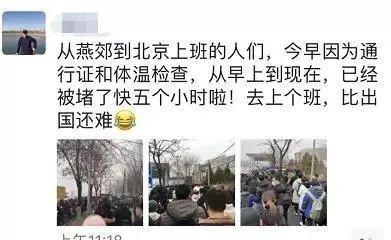
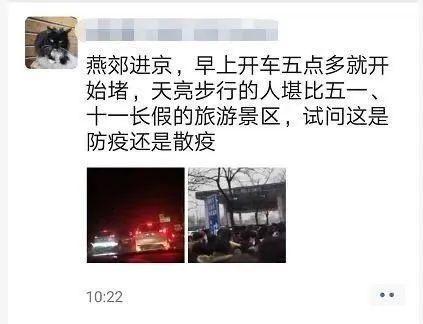
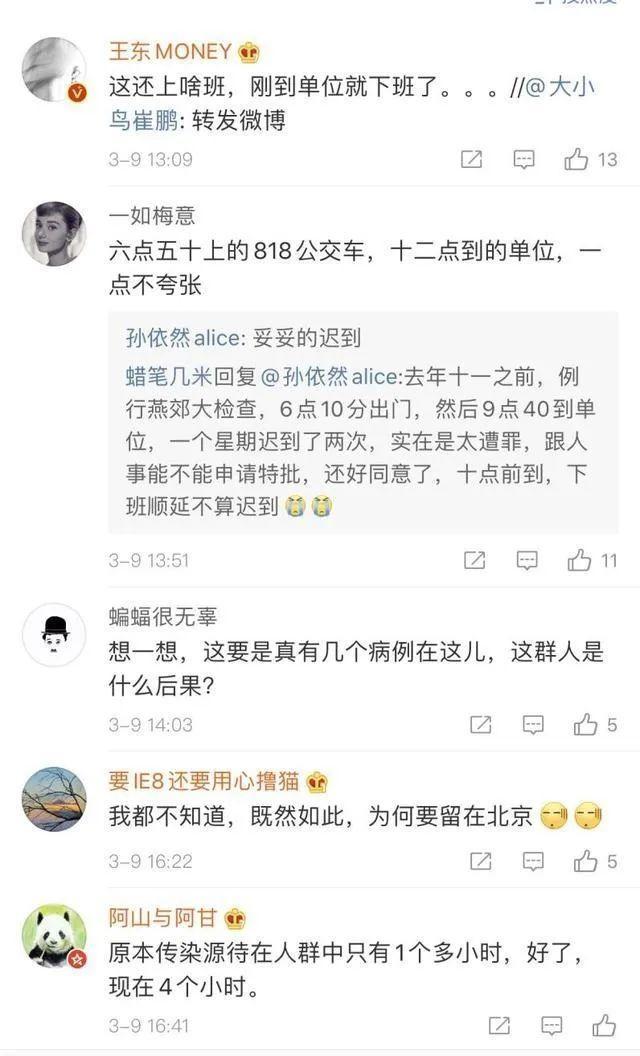
Beijing checkpoint: there are so many people as if they are in a popular scenic spot.
On March 9, another Monday after the resumption of work, a video of the crowd congestion at the Baimiao checkpoint from Yanjiao, Hebei Province, sparked heated discussion after it was spread on social platforms. In the 12-second video, many people wearing masks lined up at the checkpoint waiting for inspection, and the crowd could not see at a glance. It is reported that the time for vehicles to pass through checkpoints is as long as 2 to 4 hours. Before the epidemic, it only took half an hour for vehicles to pass.
There are two main checkpoints from Yanjiao to Beijing, one is Baimiao South checkpoint at Tongyan Expressway intersection, and the other is Baimiao North checkpoint on the old Beijing-Yushu line. Baimiao North Checkpoint is located on the national highway, and the people who have been inspected from this station mainly go to the subway station or the Beijing City Sub-center to work.
The same congestion also occurred at the checkpoint of Friendship Bridge in Dachang.
Hu Xiao, who lives in Chaobai Peacock City Community of Dachang, works in a company in Beijing’s North Fourth Ring Road. On March 9, at 5 am, Hu Xiao got up early and went out to work after washing. As a result, he was stuck in the Friendship Bridge for nearly 2 hours, and it was close to 10 am by the company. Hu Xiao said that the traffic jam at the checkpoint is not so serious at ordinary times, but it takes two hours at most from home to the company. "From the community, after two traffic lights and 500 meters to the checkpoint of Friendship Bridge, the traffic jam began, and the car went ahead like a snail, queuing for nearly two hours, and passing through the checkpoint of Dachang to check the ID card and take the temperature. The first level has passed, and there is a second level. After crossing the bridge, the Tongzhou checkpoint arrived, and the identity card was also checked and the temperature was measured. The cars at the bridgehead were one after another. " Just a week ago, the Friendship Bridge was still very "friendly". The Friendship Bridge carried many people’s dreams of going to Beijing.
As the northern drifters who live in Yanjiao, they are no strangers to the traffic congestion in Beijing every Monday. However, on Monday, March 9, friends in Yanjiao were still stunned by the unprecedented congestion in the "three northern counties" including Yanjiao, and there was no relief in the morning of March 10.
Where are the three northern counties?
You can understand it with two maps.
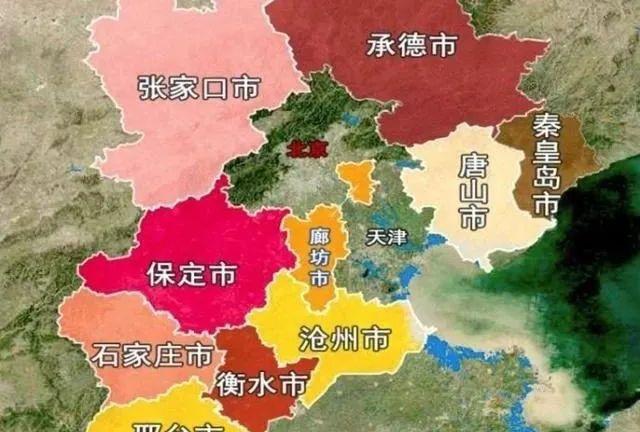
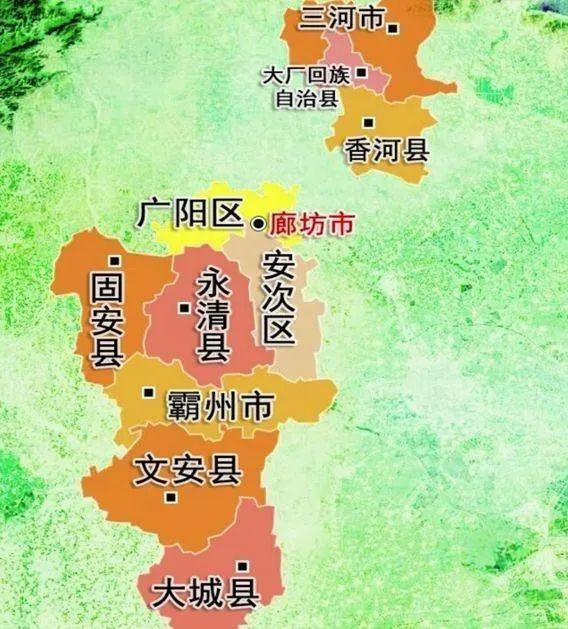
In Hebei, there is a saying of "three northern counties". The so-called "North Three Counties" refer to sanhe city, Dachang Hui Autonomous County and Xianghe County under the jurisdiction of Langfang City. These three counties and cities are administratively affiliated to Langfang City, Hebei Province, but they have been wrapped up by Beijing and Tianjin and become "enclaves" in Hebei. (In the picture above, the "enclave" sandwiched between Beijing and Tianjin is the three northern counties. ) The special geographical location makes it a special economic zone in Hebei and the nearest "back garden" in Beijing. Yanjiao, which we are most familiar with, belongs to Sanhe, and Xianghe Furniture City and Xianghe Meat Pie, which we are familiar with, are all "specialties" of the three northern counties.
Under the epidemic, the three northern counties were so congested in Beijing. In order to save time to the greatest extent, many office workers from Yanjiao to Beijing choose to walk to Baimiao Village and then transfer to public transportation. People who go to work must get up early if they want to attend work normally. Some netizens reported that traffic jams began at 5 o’clock in the morning, and people walking after dawn were comparable to tourist attractions during the long holiday.
A Beijing office worker who lives in Tianyangcheng Community in Yanjiao sighed with emotion: "It took me three hours to get out of Yanjiao on the morning of the 9th, and the expressway simply didn’t move. Originally, I took the main road of the national highway, which was closed to traffic, and finally took the auxiliary road, bypassing Yanshun Road. Originally, the traffic volume was large, and the result was even greater. Before arriving at Baimiao checkpoint, all the passengers on the bus got off to check their ID cards and take their temperature. There were people sticking up in the queue at the end. The office worker said that everyone knows that in an emergency, we should keep our distance and cherish life, but we can’t do it at all. Finally, he arrived at the unit at 11: 40, and at that time, the canteen of the unit just started to eat.
"There are more and more people traveling to work like me in Yanjiao now. Driving or carpooling is too blocked, and time is not guaranteed." Song Ran, who lives in Yanjiao, said that when passing through the checkpoint, you need to take your temperature and check your ID card. He works in Gongzhufen himself. During working days, he needs to ride an electric car for 25 minutes to Lucheng subway station of Metro Line 6, and then take the subway for 1 hour and 15 minutes to Gongzhufen. Song Ran said that the most blocked journey to work he has experienced so far is March 9, and it took him five hours to carpool to work.
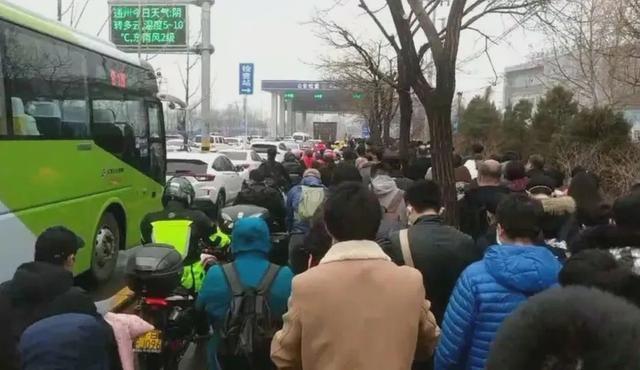
Another fact that office workers in Beijing have to face is that after the outbreak of the epidemic, the buses in the three northern counties have basically stopped. At present, there is only one bus No.818 in Yanjiao. According to media reports, on March 4th, the passenger volume of bus No.818, the only bus line between Beijing and Hebei, reached 10,025, which was the first time since it resumed operation on February 3rd. Because of fear, many office workers in the three northern counties can only choose other ways or drive to Beijing.
Under the epidemic, private cars are undoubtedly the most reassuring means of transportation for office workers. However, passengers have to queue up to walk to the checkpoint, take their temperature, check their identity cards, check their work permits in Beijing, etc., and also check the trunk.
A media person who lives in Yanjiao and works in Beijing said that the health check-up in Beijing is to strengthen epidemic prevention, but the risk caused by the early check-up on March 9 is probably higher than the risk it is committed to eliminating. On the whole, inspection in Beijing has played a positive role in all kinds of security in the capital, but the current situation has put unbearable pressure on the routine inspection system, so it is the proper meaning of people-oriented urban governance to carry out emergency adjustment. Beijing’s strict prevention and control must not be lost to the continuous congestion and gathering in the three northern counties these days.
When will the problem of difficulty in entering Beijing be solved?
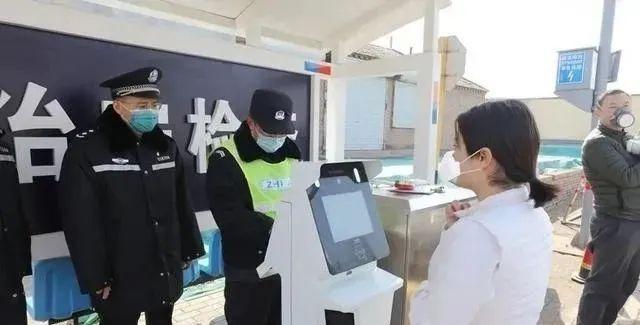
The comprehensive checkpoint of Baimiao South, Tongzhou, Beijing, allows most vehicles from Yanjiao, sanhe city to enter Beijing. For the 100,000 inter-provincial office workers who live in Yanjiao and work in Beijing, it is necessary to ensure the safety of epidemic prevention and the efficiency of returning to work. "People who can punch in on time and go home safely are equivalent to fighting monsters in the game and winning the final victory." "This is working with life." Netizens from Yanjiao joked helplessly on the Internet.
The police on duty at the Joint Service Police Station of National Highway 102 of sanhe city Public Security Bureau said that there are more than 5,600 vehicles entering Beijing in the morning rush hour every day, which has returned to about 80% of the normal traffic. They have to take the temperature of each passenger and check the identity information.
In fact, the public security department in Tongzhou District of Beijing has repeatedly added police force to the checkpoint, but with little effect. Many office workers in Beijing who live in three northern counties are eager to introduce the New Deal quickly to help them solve this urgent need.
In fact, as early as a few years ago, some netizens reported the congestion problem of Yanjiao in Beijing through channels such as leadership message boards on relevant websites. On August 1, 2019, the Beijing Municipal Commission of Communications published the Planning for the Construction of Comprehensive Highway Checkpoints in Beijing (2019-2035). According to the planning requirements, a total of 75 comprehensive checkpoints were planned, including 44 existing comprehensive checkpoints and 31 planned new ones.
Among the 31 new stations, there are 3 new checkpoints in Tongzhou. One checkpoint will be completed this year and the other two will be completed in 2022.
The Beijing Sub-center moved eastward to Tongzhou, and the three northern counties ushered in the opportunity of coordinated development with the Beijing Sub-center. Previously, the plan to realize the "Four Unifications" between Beisan County of Langfang and Tongzhou District of Beijing has been reported to the Beijing-Tianjin-Hebei Collaborative Development Leading Group, and Beisan County and Tongzhou of Beijing formally implemented the "Four Unifications" (that is, unified planning, unified standards, unified policies and unified management and control).
Now, it is time to solve the problem of "difficulty in entering Beijing" in the three northern counties.
"It is necessary to avoid the inspection of the entrance to Beijing in the three northern counties. What I mean here is not to check carefully, but to face thousands of people who have to go to work on their way with the average screening of needle in a haystack. Beijing, Tianjin and Hebei are already quite safe areas. Except for imported cases, there are few new local cases. At this time, in order to be absolutely safe, it will become a kind of’ relative formalism’ to face the huge flow of people to work by dealing with a small number of people during the peak period of the epidemic. " Hu Xijin, a media person, said.
On the afternoon of March 9th, the thirty-ninth meeting of the leading group for the prevention and control of epidemic situation in COVID-19, Beijing and the eighth meeting of the coordination mechanism for joint prevention and control of strict management in Beijing were held. The meeting stressed that it is necessary to increase inspection channels at checkpoints in Beijing to prevent queues from being crowded. In crowded places such as supermarkets and hypermarkets, epidemic prevention measures should be strictly implemented. Give full play to the role of "health treasure" in resuming work and production. It is necessary to attach great importance to safety in production during the epidemic prevention and control period, and strengthen safety inspections at centralized medical observation points and sites and enterprises that have resumed production to prevent safety accidents.
Some insiders suggest that because there are a large number of people working in Beijing in Yanjiao and other three northern counties, bringing these areas into the prevention and control system of the capital is probably one of the solutions to the problem. It is necessary to formulate a quick passage method for people who need to travel to and from the capital and the three northern counties every day to avoid them having to check every time they pass.
Search the city for more than one time: strictly control Beijing in many places.
On March 9, the Shenyang Epidemic Prevention and Control Command issued Order No.8, which proposed to strictly implement the regulations on entering Beijing, further strengthen the management of entering Beijing during the epidemic prevention and control period, and give full play to the role of the "moat around Beijing" in epidemic prevention and control.
On March 5th, the Office of the Leading Group for Epidemic Prevention and Control in Taiyuan issued seven measures to strictly manage the epidemic in Beijing. Among them, all organs, organizations, enterprises and institutions are responsible for the prevention and control of the epidemic in their own units, and in principle, their staff members are not allowed to enter Beijing during the epidemic; Railway stations, airports, bus stations and other transportation stations should strictly control the ticket purchase and quarantine check-up points, and those who find confirmed cases, suspected cases, asymptomatic infected persons, close contacts and respiratory symptoms such as fever and cough in COVID-19 are not allowed to enter Beijing; All kinds of medical institutions at all levels should strictly implement the graded diagnosis and treatment system, strictly manage the examination and approval of referral to Beijing, and in principle, they should not go through the referral procedures in Beijing for diseases that have the ability to diagnose and treat in the province.
On March 3, the Office of the Leading Group for Epidemic Prevention and Control in Cixian County, Handan City, Hebei Province issued a notice on strengthening the management of entering Beijing, stipulating that all townships and counties should fully implement the responsibility of "preventing exports", do a good job in health screening and management of people entering Beijing, and educate and guide the masses not to enter Beijing as much as possible during the epidemic prevention and control period; Those who are found to be prepared to enter Beijing will be discouraged according to the law and regulations, and those who are at risk will be resolutely prevented from entering Beijing.
On March 1, the leading group for epidemic response in Julu County, Xingtai City, Hebei Province issued an announcement on strengthening the management of people entering Beijing during the epidemic, stipulating that it is strictly forbidden to enter Beijing under the following circumstances: confirmed patients and suspected patients in COVID-19 and their close contacts; Diagnosed patients who have been cured and asymptomatic infected people (Covid-19 nucleic acid test is positive) and their close contacts; Query the roaming records of mobile phones, with a history of living in Hubei; Having symptoms such as fever.
Reporting/feedback
关于作者